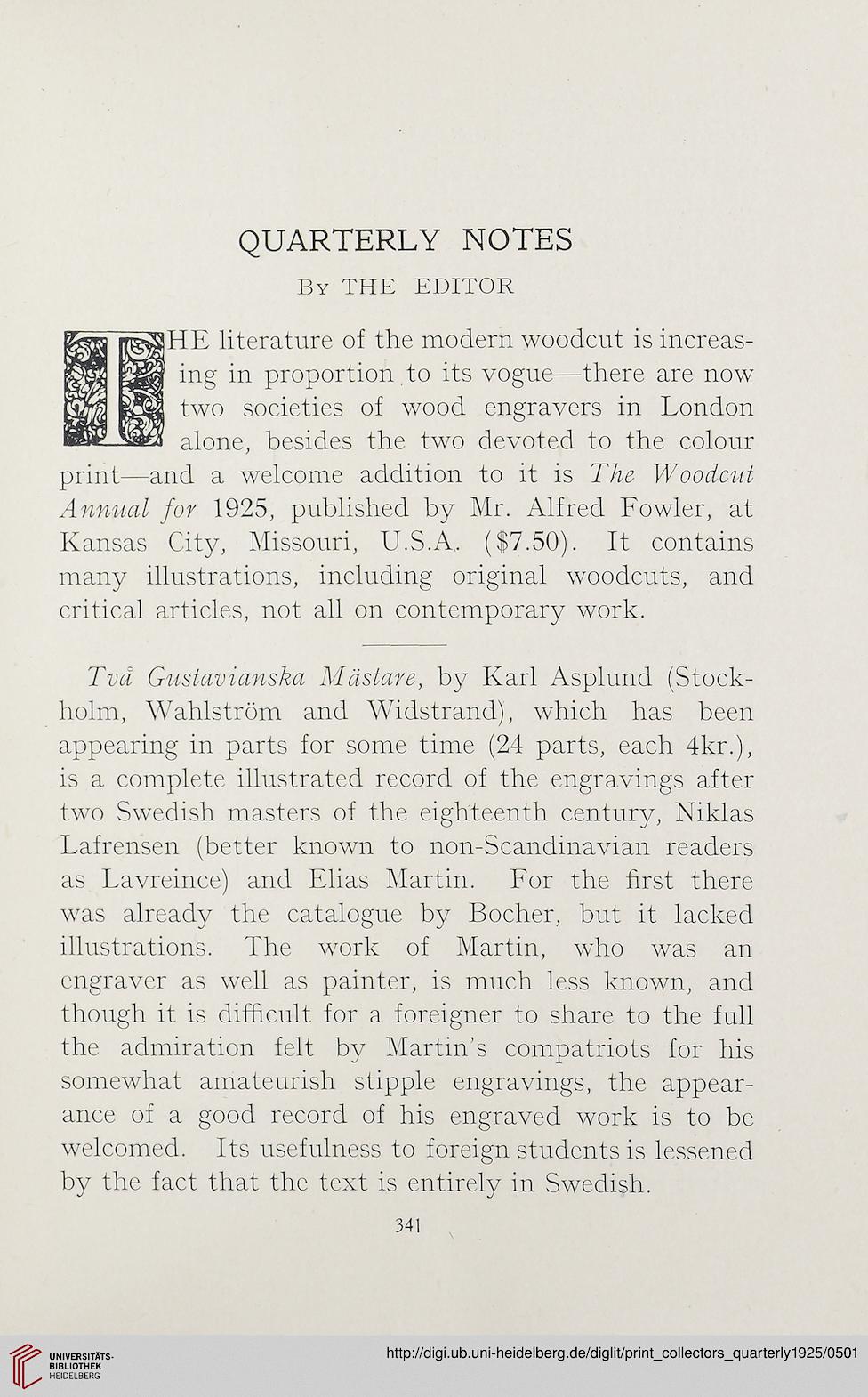QUARTERLY NOTES
By THE EDITOR
HE literature of the modern woodcut is increas-
ing in proportion to its vogue—there are now
two societies of wood engravers in London
alone, besides the two devoted to the colour
print—and a welcome addition to it is The Woodcut
Annual for 1925, published by Mr. Alfred Fowler, at
Kansas City, Missouri, U.S.A. ($7.50). It contains
many illustrations, including original woodcuts, and
critical articles, not all on contemporary work.
Tvd Gustavianska. Mdstare, by Karl Asplund (Stock-
holm, Wahlstrbm and Widstrand), which has been
appearing in parts for some time (24 parts, each 4kr.),
is a complete illustrated record of the engravings after
two Swedish masters of the eighteenth century, Niklas
Lafrensen (better known to non-Scandinavian readers
as Lavreince) and Elias Martin. For the first there
was already the catalogue by Bocher, but it lacked
illustrations. The work of Martin, who was an
engraver as well as painter, is much less known, and
though it is difficult for a foreigner to share to the full
the admiration felt by Martin’s compatriots for his
somewhat amateurish stipple engravings, the appear-
ance of a good record of his engraved work is to be
welcomed. Its usefulness to foreign students is lessened
by the fact that the text is entirely in Swedish.
341
By THE EDITOR
HE literature of the modern woodcut is increas-
ing in proportion to its vogue—there are now
two societies of wood engravers in London
alone, besides the two devoted to the colour
print—and a welcome addition to it is The Woodcut
Annual for 1925, published by Mr. Alfred Fowler, at
Kansas City, Missouri, U.S.A. ($7.50). It contains
many illustrations, including original woodcuts, and
critical articles, not all on contemporary work.
Tvd Gustavianska. Mdstare, by Karl Asplund (Stock-
holm, Wahlstrbm and Widstrand), which has been
appearing in parts for some time (24 parts, each 4kr.),
is a complete illustrated record of the engravings after
two Swedish masters of the eighteenth century, Niklas
Lafrensen (better known to non-Scandinavian readers
as Lavreince) and Elias Martin. For the first there
was already the catalogue by Bocher, but it lacked
illustrations. The work of Martin, who was an
engraver as well as painter, is much less known, and
though it is difficult for a foreigner to share to the full
the admiration felt by Martin’s compatriots for his
somewhat amateurish stipple engravings, the appear-
ance of a good record of his engraved work is to be
welcomed. Its usefulness to foreign students is lessened
by the fact that the text is entirely in Swedish.
341




